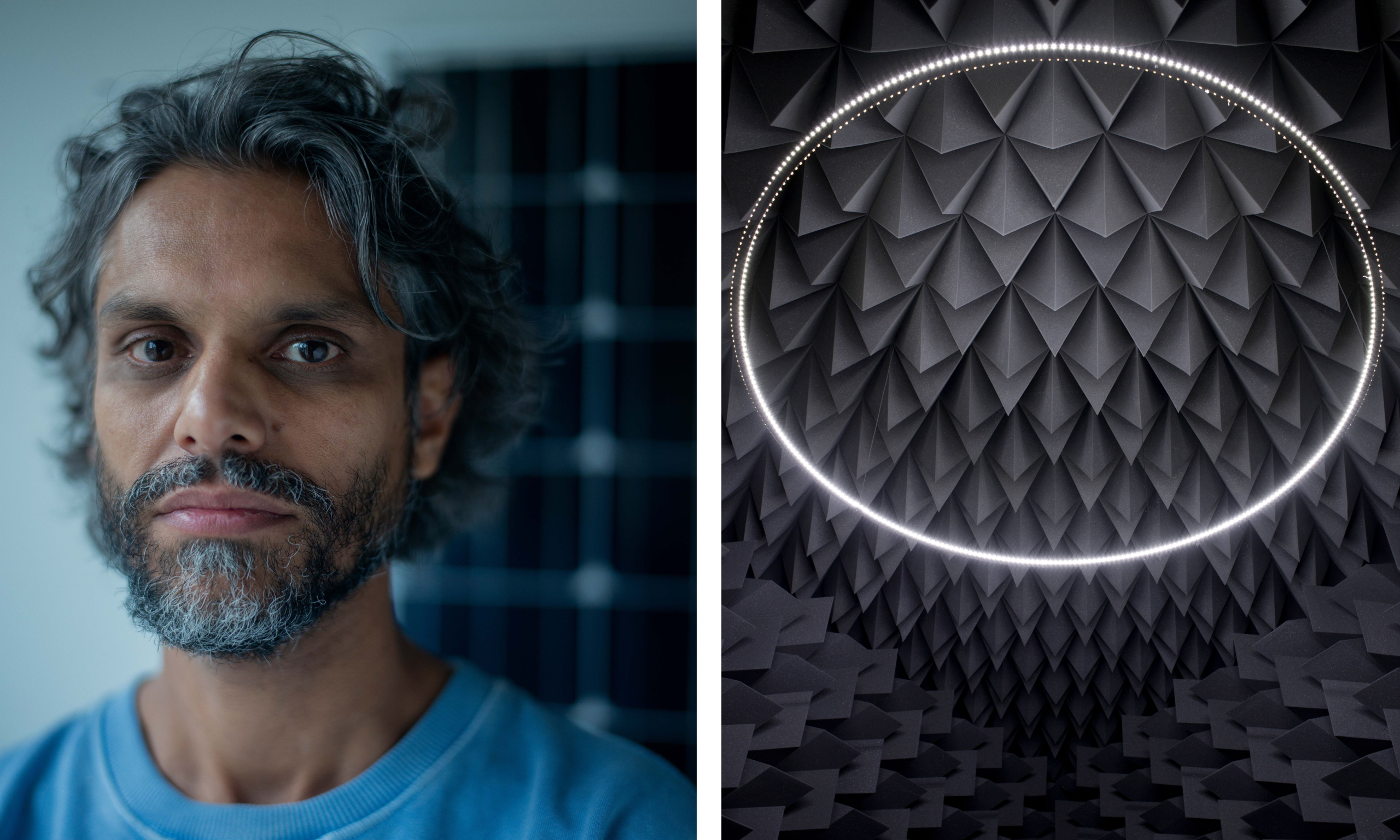Left to right: Haroon Mirza / Haroon Mirza's The National Apavilion of Then and Now (2011)
© David Bebber 2021 / Courtesy of the artist
In this podcast, based on The Art Newspaper's regular interview series, our host Ben Luke talks to artists in-depth. He asks the questions you've always wanted to: who are the artists, historical and contemporary, they most admire? Which are the museums they return to? What are the books, music and other media that most inspire them? And what is art for, anyway?
Ben Luke talks to Haroon Mirza about his influences—from writers to composers and musicians, film-makers and, of course, artists—and the cultural experiences that have shaped his life and work.
Haroon Mirza's //// //// (Aquarius) (2017)
Courtesy of the artist
Mirza, born in London in 1977, creates installations using sound, light, objects and video. These complex and evolving experiences immerse the viewer in varied sensory phenomena while building fascinating connections between their materials, formally and in the meanings they produce.
Haroon Mirza's //// //// (Aquarius) (2017)
He reflects on his early interest in Salvador Dalí’s sense of space and time; the impact of seeing the exhibition Sensation in 1997 at the Royal Academy in London; the relationship between science and science fiction; and the complex process of translating ideas from his head to a practical language. We gain insight into Mirza’s studio life and daily rituals and he answers the ultimate question: what is art for?
Haroon Mirza's Dyson Sphere For Schumann Resonances (Solar Symphony 13) (2021/2022)
Courtesy of the artist
• Haroon Mirza, Lisson Gallery, London, 24 February-8 April. You can listen to Haroon’s Modular Opera EP at haroonmirza.bandcamp.com
This podcast is sponsored by Bloomberg Connects, the arts and culture app.
The free app offers access to a huge range of international cultural organisations through a single download, with new guides being added regularly. They include several museums in which Haroon Mirza has had notable presentations, like Yorkshire Sculpture Park, The Hepworth Wakefield and Camden Art Centre in the UK and the Museum of Modern Art in New York. The MoMA guidehas numerous features with in-depth audio content, including those on current exhibitions, like Guillermo del Toro: Crafting Pinocchio, and the collection displays across several floors of the museum. It also includes detailed verbal descriptions of major MoMA works designed for audiences who are blind or have low vision.

